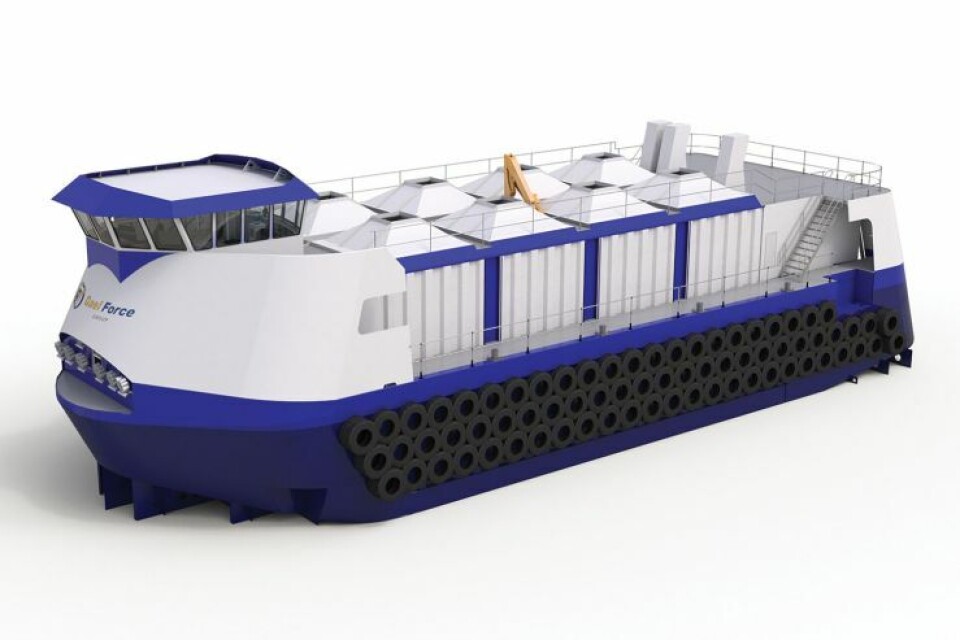
Gael Force to test semi-closed containment pen next year
Scottish aquaculture equipment supplier Gael Force expects to test a half-size floating semi-closed containment (SCC) enclosure next year, owner Stewart Graham has revealed.
The Inverness-based company is halfway through a £2.3 million project to develop its SeaQureFarm, a salmon farm that would include SCC for post-smolts or for growing fish to harvest size.
The SCC would have a constant supply of oxygen from a multi-function feed barge, with two back-up systems each for oxygen and electricity to safeguard stock in case of malfunction.
‘The economics work’
Gael Force sees semi-closed containment as a cost-effective alternative to the land-based recirculating aquaculture systems (RAS) that are increasingly being used to grow salmon to a larger size before they are transferred to net pens at marine sites.
“It is clear the economics work,” said Graham. “It is technically making it work [that is the challenge].
“It will be prototyped in partnership with a producer: first half size, then full size – one pen – then a full farm.
“Lots of the elements [of the SeaQureFarm] are out there already. We have integrated everything.”
Performance gains
Graham was speaking after a presentation at Aquaculture UK by SCC expert Knut Senstad, arranged by Gael Force and attended by some of Scotland’s most experienced salmon farmers and executives.
Senstad, who defined post-smolts as fish weighting more than 200g, warned that the any performance gains achieved in net pens by using post-smolts produced in RAS were unlikely to offset the additional cost of growing the fish to that size on land.
He stressed that farmers should make detailed calculations before investing in a RAS and simulate outcomes.
“I’ve done 150 simulations and in 30% of the examples it is a disaster because RAS is so expensive and if something happens to those fish the cost [of the loss] is much higher.”
Cost difference
Staring off with the price of a 100g smolt at £1.30, Senstad said his calculations showed a RAS-produced 400g post-smolt would cost £2.80, while one produced in an SCC would cost £1.98.
The difference increased with the size of the fish, with a 600g RAS-produced post-smolt costing £4.80 and one grown in a bag costing the farmer £2.63.
Looking at the options of growing fish to a harvest size of 5.5 kg in a net or in semi-closed containment, Senstad pointed out that although the SCC method required electricity and oxygen input, there was no requirement for lice treatments and therefore no loss of feeding days, which would in theory lead to higher biomass.
He predicted 20% more biomass, and said that because more biomass dilutes cost per kilo, such an increase in volume lower cost by £0.20 per kilo of live fish on day of harvest.























































